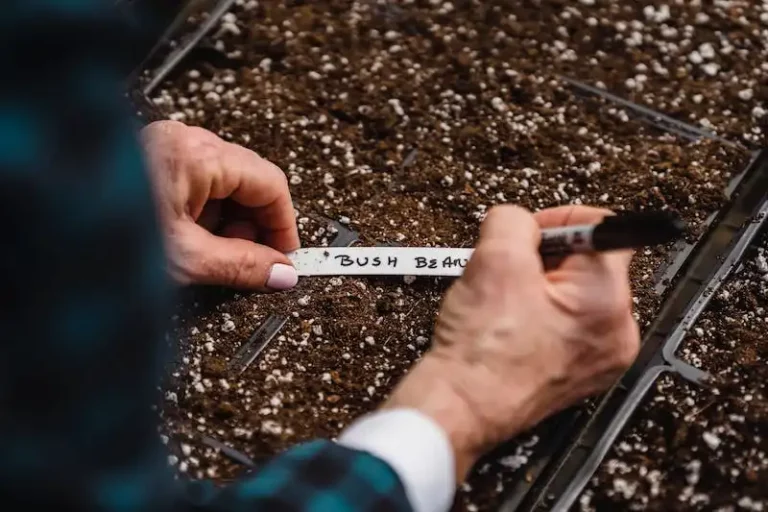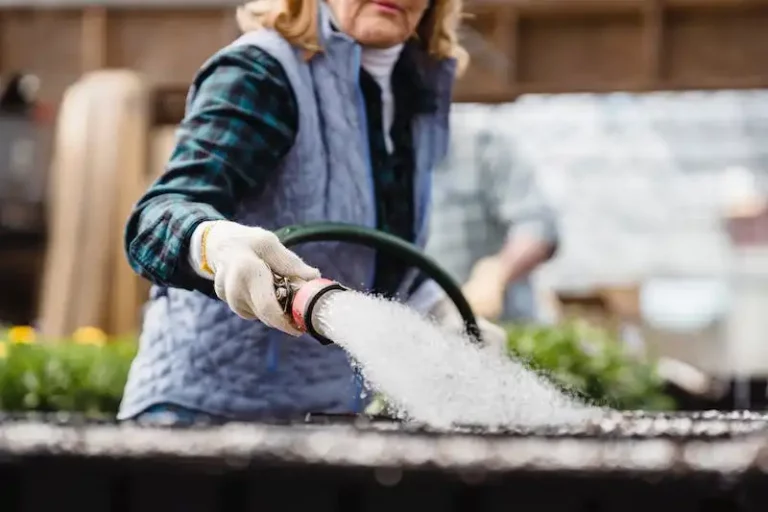Looking for a bit of luck’o the Irish to brighten up your window sill? The shamrock plant, also known as the Irish clover or the 4-leaf clover, may be just what you’ve been looking for. This colorful and clover-like subject is a rewarding plant to grow indoors, especially for those with a green thumb.
The shamrock plant, which hails from Ireland, prefers to be grown indoors. It feeds off bright but indirect sunlight and should be placed in a potting mix that is well-draining and rich in nutrients. The plant should be watered whenever the top inch of soil feels dry to the touch, but be sure not to overwater as this can lead to root rot.
Fertilizing the shamrock plant is a great way to bring out the best in its foliage. It prefers to be fertilized every 2-4 weeks during the growing season, which is typically in the summer months. However, be sure to stop fertilizing during its dormant period in the winter.
Similar to other indoor plants like the monstera or the pothos, the shamrock plant is a relatively low-maintenance plant. It is generally disease-free and does not require a lot of effort to care for. However, be aware that it is toxic to pets, so be sure to keep it out of reach of your furry friends.
If you’re looking to bring a bit of Irish luck into your home, the shamrock plant is a great choice. Its beautiful and vibrant foliage will bring a touch of fortune—or at least a splash of color—to any room.
Shamrock Plants – Luck’o the Irish
Shamrock plants, also known as Oxalis, are popular houseplants that bring a touch of luck and beauty into your home. Each leaf is shaped like a heart, with three to four leaflets that fold together at night.
When selecting a shamrock plant, there are a few things to keep in mind. First, consider the temperature of your home. Shamrock plants prefer cooler temperatures, ideally between 60 and 70 degrees Fahrenheit. They can tolerate some fluctuations, but extreme temperatures may cause leaf blotch or leaf drop.
Shamrocks are relatively easy to care for, making them great plants for beginners. They thrive in bright, indirect light, although they can tolerate some direct sunlight. Place your shamrock plant near a north or east-facing window for the best results.
Watering is another essential aspect of shamrock plant care. Water your plant when the top inch of soil feels dry to the touch. Be sure to water thoroughly, allowing water to flow out of the drainage holes. However, avoid overwatering, as it can lead to root rot. If your plant is in a pot without drainage holes, consider adding a layer of pebbles at the bottom to improve drainage.
Humidity is also important for shamrock plants. They prefer moderate humidity levels, so mist the foliage lightly or place a tray of water nearby to increase humidity.
Shamrock plants are not immune to pests. Common pests include aphids, spider mites, and mealybugs. Keep an eye out for any signs of pest infestations, such as yellowing leaves or webbing. If pests are present, treat your plant with an appropriate insecticide or follow natural pest control methods.
Shamrocks can be taken outdoors during the summer months, but they should be brought back indoors before the last frost. During this time, be cautious of direct sunlight, as it can scorch the foliage. Also, be mindful of watering, as outdoor conditions may cause the soil to dry out more quickly.
In recent years, there has been a surge in popularity for a related houseplant called the “shamrock vine” or “four-leaf clover vine” (Epipremnum pinnatum). This trailing vine features heart-shaped leaves and thrives in bright, indirect light. The care and watering requirements are similar to those of the traditional shamrock plant.
In conclusion, shamrock plants are beautiful, easy-to-care-for houseplants that bring a touch of Irish luck to your home. With proper care and attention, these heart-shaped foliage plants can reward you with their colorful presence for a long time.
Oxalis Info
Oxalis, commonly known as “shamrock plants” or “clovers”, are popular houseplants that are well-loved for their unique foliage and delicate blooms. They belong to the ceropegia family and are native to Brazil.
Before you bring home an Oxalis plant, there are a few characteristics you should know about. Oxalis plants should be potted in a well-balanced pebble mixture and placed in a pot with drainage holes to ensure proper water drainage. The plants thrive in temperatures between 60-75°F (15-24°C) and prefer a humidity level similar to that of the average household. They can tolerate lower humidity levels, but it’s important to keep an eye on their moisture levels and use cool-mist humidifiers if necessary.
Oxalis plants come in a variety of species, including the popular four-leaf clover variety, which is believed to bring good luck. One of the most common species is Oxalis woodii, also known as the “rosary vine” or “love plant”. It features heart-shaped leaves that trail and vine-like stems.
When it comes to watering Oxalis plants, it’s important to strike a balance. Overwatering can lead to root rot, while underwatering can cause the leaves to wilt and the plant to go into dormancy. It’s best to water the plants thoroughly once the top inch of soil feels dry to the touch. During dormancy, which usually occurs in winter, watering should be reduced. However, keep an eye on the moisture level and resume watering whenever the plant starts showing signs of new growth.
Fertilizing Oxalis plants should be done sparingly. A slow-release balanced fertilizer can be applied once a month during the growing season. It’s important not to overfeed the plants, as this can lead to leaf burn and other diseases.
Oxalis plants are generally easy to care for, but they are susceptible to a few pests and diseases. Common pests include aphids, spider mites, and mealybugs. Keeping the plant clean, checking for pests regularly, and using natural pest control methods can help prevent infestations. Leaf blotch, caused by a fungal infection, is another common issue that can be treated with appropriate fungicides.
In summary, Oxalis plants, with their beautiful foliage and delicate blooms, are a great addition to any indoor garden. With a little effort and attention to their specific needs, they can thrive and bring a touch of luck and beauty to your home. Please refer to other articles on how to care for specific varieties of Oxalis plants, such as Oxalis aureum and Oxalis monstera.
| Luck | Woodii | Fertilizing |
| Watering | Rosary | Pests |
| Four-leaf | Swiss | Temperature |
| Blooms | Ceropegia | Humidity |
How to Grow Oxalis
Growing oxalis, also known as the shamrock plant, is a great way to bring a touch of luck and vibrant color to your indoor or outdoor spaces. Here are some tips on how to successfully cultivate and care for this unique plant.
- Selection: When selecting an oxalis plant, look for one with healthy, green leaves. Avoid plants with yellowing or browning foliage.
- Watering: Oxalis prefers to be kept consistently moist, but not overly saturated. Watering once or twice a week should suffice. Avoid letting the plant sit in standing water, as it can cause root rot.
- Fertilizing: Feed your oxalis plant with a balanced, water-soluble fertilizer every two weeks during the growing season. Be sure to follow the instructions on the product label for application amounts.
- Light: Oxalis thrives in bright, indirect light. Placing it near a window with filtered sunlight is ideal. Avoid direct sun exposure, as it can scorch the leaves.
- Temperature: Oxalis does well at room temperature, between 65-75°F (18-24°C). Keep it away from cold drafts and extreme temperature fluctuations.
- Dormancy: Oxalis goes through a dormancy period, usually in winter. During this time, the leaves will die back, and the plant will enter a resting state. Reduce watering and stop fertilizing until new growth emerges.
- Humidity: The oxalis plant prefers slightly higher humidity levels. You can increase humidity by placing a tray of water or a pebble tray near the plant or using a cool-mist humidifier.
- Indoor vs. Outdoor: Oxalis can be grown both indoors and outdoors, although it may thrive better indoors in controlled conditions. If growing outdoors, select a location with partial shade or dappled sunlight.
With proper care and attention, your oxalis plant will reward you with its beautiful, clover-like blooms and vibrant foliage. Just remember to water, fertilize, and provide the right light and temperature conditions, and you’ll be on your way to a lush and thriving oxalis plant.
Light
The Shamrock Plant, also known as the Ceropegia woodii or the String of Hearts, is a type of vine plant that is similar to the Pothos. Like other indoor plants, the Shamrock Plant requires proper light to thrive and grow.
When it comes to lighting conditions, the Shamrock Plant does best in bright, indirect sunlight. It should be placed in a room with a good amount of natural light, but avoid exposing it to direct sunlight, as this can burn the leaves. If you notice that the plant is becoming too leggy or stretching towards the light, it may indicate that it needs more light.
In addition to lighting, it is essential to consider the lighting duration for the Shamrock Plant. It should receive around 12-14 hours of light each day. If you keep the plant indoors, you can provide sufficient light by placing it near a window or using artificial grow lights.
One important thing to note is that the Shamrock Plant goes into a dormant period during winter, where it needs less light. During this time, you can place it in a darker room. However, once spring comes, you should gradually increase the light exposure to bring the plant back to its active growing state.
If you have other types of plants near the Shamrock Plant, it’s crucial to know that different plants have different light requirements. So, make sure to select plants with similar light needs when setting up an indoor garden.
In conclusion, appropriate lighting is essential for the indoor growth of the Shamrock Plant. Providing enough bright, indirect light and adjusting the lighting duration accordingly will help it thrive and maintain its vibrant green color.

